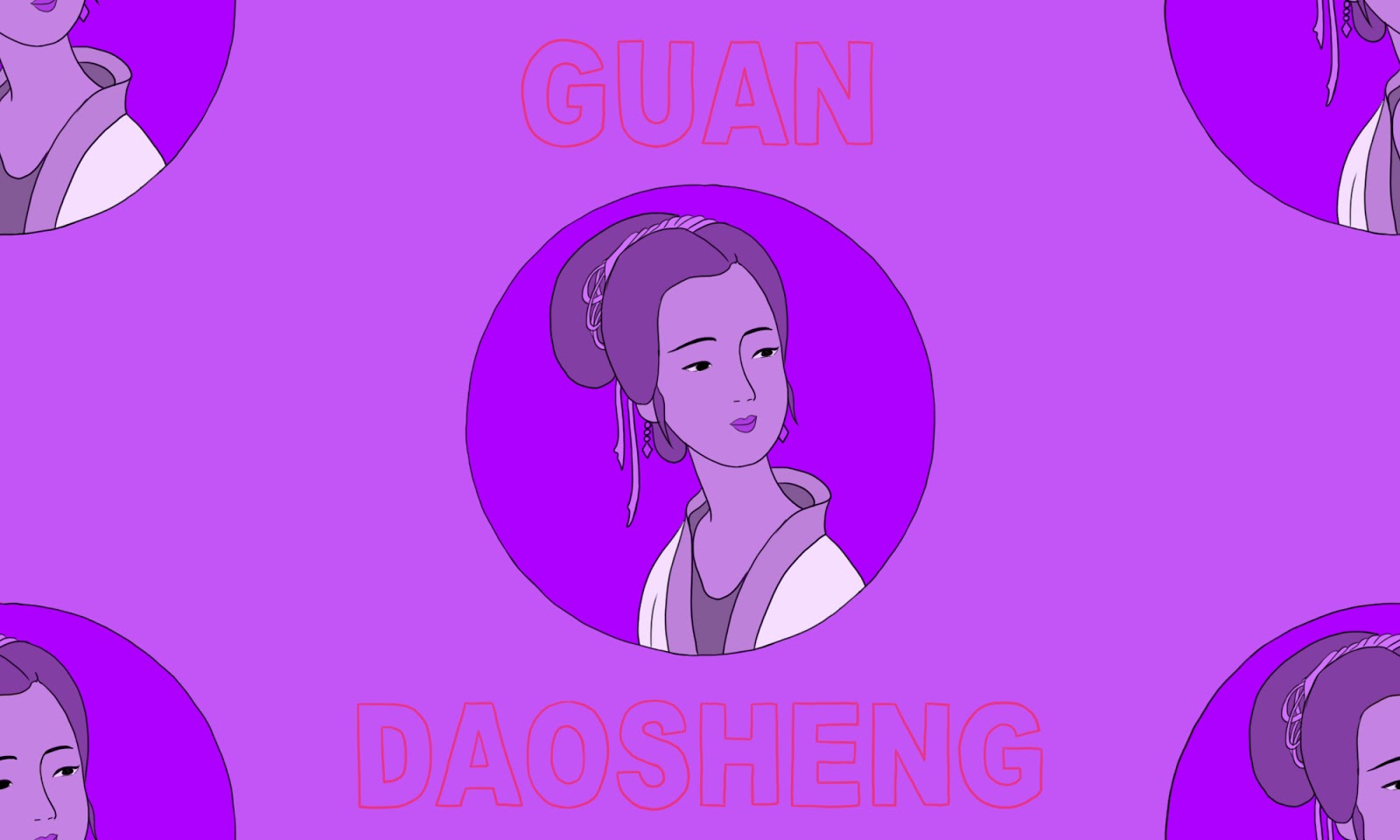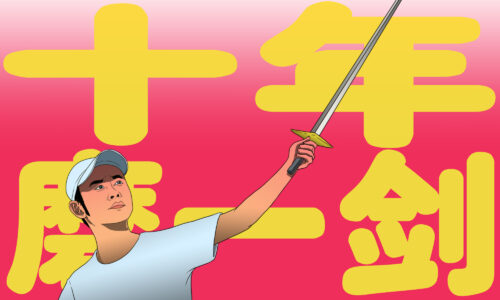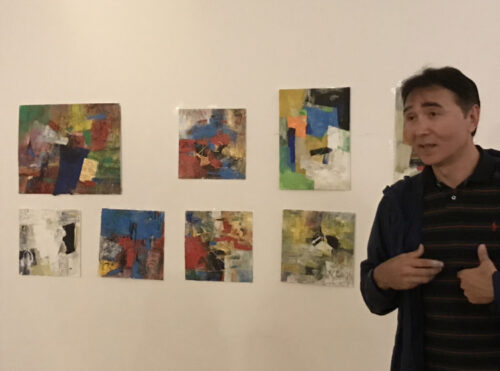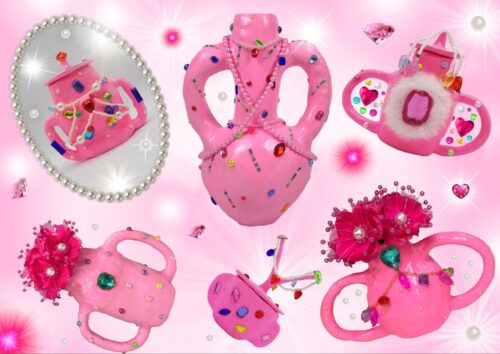It’s seven centuries old, but Guǎn Dàoshēng’s 管道升 response to her husband wanting to take a concubine still scorches the page. “Grab a lump of clay,” she urged him in a poem (as translated by Jennifer Purtle), make a model of you and another of me. “Smash us together; / Use water to blend [our parts].” Make two new figures of us. “Thy clay contains me, / My clay contains thee.” Make no mistake. “With thee, in life [I] share a coverlet, / In death [we will] share a single crypt.”
This Yuan Dynasty poem — passionate, carnal, spoken as if to a peer — was everything a good Confucian marriage wasn’t. This relatable romance still has a place in modern China, with cartoon adaptations on Weibo, and amateur Douban poets riffing on it to express their own sexual and spiritual passions.
Guan bent several norms of ancient China. She was a legendary artist specializing in masculine subjects, collected by emperors and revered by a Confucian society which usually confined women to the family courtyard and ranked them beneath their husbands.
Who is Guan Daosheng?
Her breaking of the gender mold began from her birth in 1262. Her parents — wealthy, lacking sons and believing her intellect exceptional — gave Guan a son’s classical education at a time when most women were denied this privilege.
They hoped to find someone worthy of her, and they weren’t disappointed: the man they chose as her husband was Zhào Mèngfǔ 赵孟俯. He was of noble birth, descended from the family of the Song — the imperial dynasty before the Yuan. He was already revered as a brilliant scholar and would become known as the greatest landscape painter of the Yuan. His application of calligraphy techniques to painting — minimalism, black-and-white colors, emphasis on personal expression over accurate representation — led to an artistic revolution.
The match was a spectacular success. In a society where (according to Marco Polo) women in some parts of the country wore special bonnets that kept their eyes fixed on the ground and rarely ventured out of doors, Guan had privileges as Zhao’s wife. Kublai Khan eagerly collected the greatest Chinese scholars of the day to cement his mandate to rule the Han Chinese. When her celebrated husband was summoned to Dadu (Kublai’s capital, the embryonic Beijing) in 1286 to work for his court at the War Ministry, she was allowed to travel with him from Huzhou, all the way up the Grand Canal.
The strength of Guan and Zhao’s love was unconventional — partly because of Zhao’s admiration for Guan’s unusual character, which the poem “You and I” would have reminded him of. “Guan was remarkably explicit in expressing her ardor for her husband, committing to paper sentiments most unseemly by Confucian standards of the ‘pure and obedient’ or ‘chaste and righteous’ wife,” says Professor Jennifer Purtle of the University of Toronto. After Guan’s poem, Zhao never mentioned concubines again.
His devotion can be seen in how he chronicled her: his epitaph for her in The Collected Works of the Songxue Studio forms the majority of source material for her life, describing fondly her “manner [which] was winning…[and with] intelligence clear as moonlight.” She had also been his collaborator — the two writing poems for the other’s artwork — as well as his estate manager.
She was famous at the time for her bamboo paintings. The plant had already been painted for centuries, but in Guan’s hand it was given an interesting twist. Instead of single stalks of bamboo being the only feature as was traditional, she painted them in intricate thickets re-situated in landscapes of southern China.
But why was a woman painting bamboo? Maybe she yearned for hallmarks of the south while cloistered in the Khan’s capital and the dry northern plains surrounding it. However, the plant was also a masculine symbol, constantly green all year round and hard to bend, even harder to break. Perhaps it was a subtle note of defiance, symbolic of the strength of the Han Chinese, bowed but unbroken under Mongol rule. But critics were more interested in Guan’s gender-reversed subject matter: even her brushstrokes were considered too controlled for a woman’s hand, and the gender-neutral language of her verses were equally manly.
Perhaps this fixation on her identity frustrated Guan, who wrote tongue-in-cheek in 1310: “To play with brush and ink is a masculine sort of thing to do, yet I made this painting. Wouldn’t someone say that I have transgressed? How despicable, how despicable.” What was the point of these petty restrictions for women, especially if they were so easily and readily overturned for her?
Her work was popular. This was unusual for Yuan gentlewomen, who brought shame on their family by interacting with men or showing their work to outsiders. One of Guan’s contemporaries, the poet Huang Zhigui, lamented how a stranger had dared to ask for one of her paintings. By comparison, Guan’s husband (and his prominent position at court) gave her the status needed to bend the rules. It’s believed she collaborated on works with her husband, the two publicly painting temple murals together.
She gained fame across the Empire and spawned numerous imitators, the Emperor Renzong setting her reputation by collecting her work (alongside those of her equally talented husband and son). He gave her the title “Lady of the Wei Kingdom,” which elevated her in her own right to the position of a feudal lord, and commanded her to calligraph the “Thousand Character Classic.” According to Zhao, Renzong said this was “to make posterity aware that in Our court there was a Lady who excelled in calligraphy.”
But little is left of her work, this ancient celebrity now an intriguing shadow. Only one extant piece has been authenticated as hers with certainty: “Bamboo Groves in Mist and Rain,” from 1308. It was a view painted from “a small boat” for one of her powerful female patrons at court.

She left Zhao a widower, succumbing possibly to beriberi while traveling homeward down the Grand Canal in 1319. Zhao never remarried, and painted bamboo for the remaining three years of his life, yearning for the woman with whom he had shared his soul.
Chinese Lives is a weekly series.






